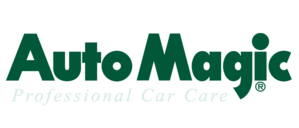Posted by Ronnie Humphries on 14 September, 2016
|
Why You Should Clean Your Vehicle’s Interior?
Keeping the inside of your vehicle clean is just as necessary at keeping your paint clean and waxed. You’ll not only prolong the life of the materials inside of the car, but also keep microorganisms from making it their home.
Detailing the inside of your car will make it a safer environment and help to reduce the occurrence of mechanical problems. Dirty and foggy glass reduces visibility, dirty vents spread allergens and dust, and grit can get into buttons and levers.
Keeping your car’s interior clean can be easily done at home. Here’s how you can avoid costly detail, along with repair charges, by doing a bit of the work yourself.
Hard Surface Cleaning
Let’s call the dashboard, door panels, door posts/jams, and center console your hard surfaces. These should be cleaned with a cleaner and light brush or towel.
This is a relatively straight-forward process.
Open up the doors to get the jambs. Scoot the seats back to clean the console and rails. Also, don’t forget about folding down the back seats.
Cleaning the hard surfaces can be done in three simple steps:
-
Lightly mist the area with the cleaning product.
-
Agitate with a brush or towel.
-
Towel dry.
Pro Tip: Use a dry brush first to clean out cracks and crevices, and compressed air works wonders for vents.
Hard Surface Protection
Once all the hard surfaces are cleaned to your liking, it is time to protect them. This will give the interior of your vehicle a shiny, clean look, while also extending the life and color of the surfaces.
There are several products that will get the job done, ranging from a water-based dressing to an aerosol detailer. Here’s the skinny on each of these products.
Water-based Dressing: This is your typical interior/trim protection, think milky in color. It can be easily applied with a spray bottle, and will give your interior surfaces a wet look. It provides UV protection, which is important for surfaces that are constantly in direct sunlight (dashboard).
One downfall of water-based dressing is the slick, glossy feel left behind. Not only can it cause issues if put on the steering wheel, but it also tends to attract dirt particulates.
Aerosol Detailers: These are prevalent, and super easy to use. They are usually a quick-detail type aerosol spray that will give a clean surface a nice shine. Easily applied to any hard surface, they are great for a quick touch-up of those dull areas.
Xtreme Shine: This is our signature detailing product, with versatility to match. It has the UV protection benefits of other detailers/dressings, without leaving behind a greasy finish. It’s anti-static properties actually repel dust particles, keeping your surfaces cleaner and shinier for longer periods of time.
Apply Xtreme Shine like any other spray formula, using a high-quality microfiber towel. Xtreme Shine can also be used on painted surfaces and glass, removing the worry of overspray. It will leave behind a micro-protective layer that is not wet or greasy, instead it gives surfaces a clean luster.
Pro Tip: You can cut water-based dressings with water to give the surfaces more of a satin finish, for a less slick feeling.
Carpets & Upholstery Cleaning
Hopefully by now you’ve disposed of all the random trash that finds itself on the floorboard (wrappers, water bottles, loose change, etc.). Once the big stuff is out of the way, we can begin by vacuuming the carpet and upholstery.
There isn’t much of a mystery to vacuuming, just ensure you cover all areas. Use a crevice attachment to remove the grit from those hard-to-reach, narrow areas.
Pet Hair? Use a pet-hair brush, or you can don a pair of latex gloves . . . pet hair sticks to them like crazy.
For spots or stains on the carpet and seats, use a product like Super Foam. Spray on, brush in, and dry or vacuum out. If it is a specific type stain (oil, coffee, etc.) you can use an enzyme based treatment.
Pro Tip: Use mechanical measures (i.e. brush or vacuum) before chemical treatments (i.e. stain removers or cleaners).
Leather Care
Keeping your leather seats and trim in tip-top shape is of utmost importance. Just as with everything else related to your vehicle, maintenance is key to performance. If neglected, your vehicle’s leather will dry, crack, fade, and prematurely age.
The interior detail isn’t done once your leather is clean. The next step is to treat your leather with a conditioner. Apply your leather conditioner with an applicator sponge. Ensure to work the product into the leather and allow to soak in for 1-2 hours, then wipe off any excess.
Pro Tip: Always use a quality conditioner with lanolin. Cheap conditioners can contain silicone oils or petroleum based distillates, which will leave behind a glossy sheen that can transfer to clothing.
Troubleshooting Advice
Here are few suggestions for some of the more common issues we face when detailing the interior of our vehicles.
Hardened Candy, Dried Gum, and Lipstick
-
Apply Special Cleaner to soften the offending substance.
-
Shampoo, or extract the area.
-
Repeat if necessary.
Grass, Coffee, Juice, and Mildew
-
Mist the area with Enzyme Pre-Spot, allow to sit for a few minutes.
-
Shampoo, or extract the area.
-
Repeat if necessary.
Oil and Grease
-
Soften the offending substance with a Special Cleaner, let set for 1-2 minutes.
-
Agitate area with a scrubbing brush.
Pro Tip: Use a plastic razor blade to gently remove any build-up.
Instrument Panel Lens is Scratched and/or Dull
-
Polish the plastic lens with New Car Glaze to bring back clarity.
-
Use a small amount to avoid excess dust that can get behind the lens.
Pro Tip: Don’t use compressed air, that will push more dust behind the lens.








Comments